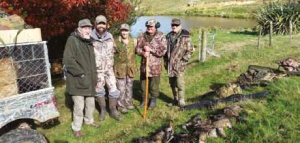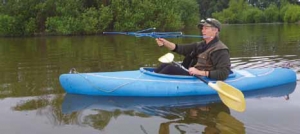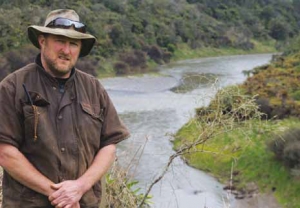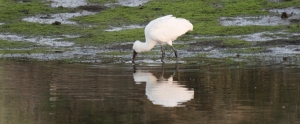The onset of autumn sees not only the change in seasons, it also signals a hugely
exciting time of the year with hunters and their canine companions excitedly make
their plans for the annual ritual of spending time in the field hunting duck, quail & deer.
Autumn signals the start of waterfowl seasons in three states of south eastern Australia, waterfowl hunting in the Northern Territory gets underway later in the year.
Keen quail hunters spend days assessing habitat in readiness for quail hunting seasons around south eastern Australia. These elusive game birds are Australia’s premier game bird for pointing and flushing breeds of gun dogs. Whatever the views held about hunting by our increasingly urbanised community, the longstanding cultural tradition of hunting game holds an important place in the human ecology.
In 2013 hunting contributed $439 million into the Victorian economy, and that doesn’t include the important work on conservation and management of habitat. Conservation and hunting are intrinsically linked, a fact that has been demonstrated for generations. However this link is not intuitively evident to our urbanised community, where thanks to technology people are more connected than ever before. Yet these same people are largely more disconnected than ever before from the practical realities of how food is sourced, indeed from many of the realities of rural life.
Hunters also contribute to research, and Field & Game Australia has been active in collecting data for several studies. Some programs have run for many years, others are emerging opportunities, such as research into Avian Influenza. The past two years have presented me with very different hunting experiences. While I remain very involved in hunting and related issues, there’s very little time to participate in hunting. The weeks are spent working and liaising with government, agencies, media, and the unfortunate reality that is the anti-hunting movement in a highly politicised environment. The irony is this, in spite of all the drama generated by the anti-hunting activists in an attempt to draw public sentiment; it’s difficult to see where all the anti-hunting effort demonstrates any significant access to habitat or improved breeding conditions.
The facts are that duck hunting in Australia, and in particular in Victoria, continues to grow. The unique public/private partnership created in 1958 between government and conservationists in response to reports that the Pacific Black Duck (Grey duck in NZ), could be extinct in as little as 10 years due to loss of habitat.
Wetlands conservation
This unique private/public partnership created a game licensing system, and the funds from licences purchased by hunters delivered revenue that allowed government to acquire threatened wetlands. These wetlands provide critical breeding sanctuary for native waterbirds, offsetting habitat lost by drainage for agricultural and other purposes, and facilitate legal hunting during the prescribed season – a purpose that is often overlooked.
This important initiative established a network of State Game Reserves (SGR), that today encompasses more than 75,000 hectares of wetlands in Victoria, and there are more in South Australia, for the purposes of conservation, and hunting. The most recent SGR was announced in August 2016, and is the 200th SGR in Victoria and recognises the role that habitat plays in sustainable hunting, as well as the importance of access to public land for lawful hunting activities.
It’s acknowledged by many, although not the anti-hunting and animal rights activists, that habitat, not hunting, is the single biggest factor affecting waterfowl populations. The 2016 duck season provided significant challenges and interference. Hunters were moved off a State Game Reserve on the eve of duck opening because of the presence of blue bill ducks. While these are a rare species, they are however one that demonstrates vastly different behaviour to game species.
Other wetlands were closed to hunting due to the presence of Australasian Bittern, again on a State Game Reserve purchased and preserved thanks to hunters working with government. However that historical approach to delivering practical environmental outcomes in partnership has become lost with the current management approach that defers to extreme precaution, is not based on facts and data, and defers to a strategy that actively avoids any notion of ‘disturbance’ of wildlife. It’s not clear what ‘disturbance’ means from a scientific perspective, I’m pretty sure a fox hunting the wetland fringe creates its fair share of disturbance, yet that appears acceptable.
NZ Hunting
It’s in this context that I travelled to New Zealand’s North Island for my first experience of duck opening “across the ditch.” What a wonderful experience, memorable for so many reasons. As an aside, to hear mention of the Bittern during my trip to NZ put me into a sweat! That there is research into this cryptic bird, funded by DU in NZ, is to be commended. I’m looking forward to reading the conclusions that are reported from this study.
Making new friends and the local customs of duck hunting in NZ made for a very enjoyable experience. The use of maimais was a novel and very comfortable method of hunting. By contrast so much of the Australian waterfowl hunting experience is about being mobile, scouting for ducks and habitat in a vast and largely dry
landscape.
Gamebird Festival
The “Gamebird Festival” is a sensational initiative. We are unable to bring game into the commercial food system in Australia; there are exceptions around the country with commercially harvested game and pest animals. To sit down to professionally prepared, cooked and presented ducks after a hunt is exceptional. Yet it’s also a no-brainer for any hunter seeking to put wild food on the table for family and friends.
I also enjoyed listening to stories of the Friday school bus run before opening day, with students swapping notes with each other about where their family was hunting the next morning. I’m a long time rugby fan and acutely aware of how Kiwis value their rugby, more often than not to my chagrin. To learn that rugby games are deferred on the opening weekend of duck season due to a lack of players is so refreshing, and a practical demonstration of the acceptance of the cultural traditions of hunting. This is a highlight to be celebrated.
The properties I had the privilege of hunting in my NZ trip shared the commitment by hunters to wetland rehabilitation and improvement. Developing and maintaining these wetlands requires real commitment, time, money, diesel, access to plant and equipment. Yes, they provide a wonderful hunting experience. And it’s this hunting experience for a few short weeks each year that generates the motivation and the revenue to create wetlands and reverse the trend in land use everywhere that sees wetlands drained for agricultural or residential development.
The lessons are the same everywhere. Create value for our natural resources, and the same people who seek to use that resource are motivated to ensure its use is sustainable. Field & Game Australia was invited to present at the conference for the Conservation through Sustainable Use of Wildlife. The paper prepared for the conference is available at the FGA website www.fieldandgame.com.au. The conference brought together a huge array of specialists in a variety of wildlife. In addition to the FGA presentation, topics covering game birds were presented by Delta Waterfowl from North America, the UK’s Game & Wildlife Conservation Trust on their fascinating grey partridge projects, and your own Fish & Game. I had the pleasure of spending time with the Fish & Game team during my visit to NZ, and I’m pleased to continue to develop the great relationship that exists between our two organisations.
Field & Game Australia
In our presentation, FGA covered the initiatives we have been busy putting in place. I’ll draw on elements of my presentation to provide the following overview of our initiatives. FGA has responded to this changed environment including making a series of recommendations to the regulator. Our recommendations are based on securing greater commitment to improving wetland habitat for water birds, and an adaptive management model, through greater focus on monitoring abundance with unmodified seasons to standardise and simplify management of our waterfowl populations. This permits the collection of more accurate data for the longterm regulation of hunting.
In addition, FGA is doing the following:
• Addressing the misconceptions and perceptions around hunting through our new publishing and media platform. This includes targeted messages on radio, billboards and digital media, with brand ambassadors telling their stories as “Australia’s most surprising conservationists”.
• In conjunction with Associate Professor Graham Hall from the University of New England, we have identified the need for surveys of key regions and wetlands to gather evidence and data on those wetlands that are consistently important in providing breeding habitat. This aligns with the need to develop a more cohesive approach to gathering specific data relevant to the requirements of game management.
• Conducting, and assisting with scientific research into Australian waterfowl, including hybridisation with introduced Mallard ducks, avian influenza, and Ross River virus.
• Working with government and other authorities to ensure the best practice for sustainable hunting and the improvement and conservation of our wetland habitats.
FGA is also proud of its achievements through its 20 years journey of establishing a recognised environmental trust, the WET Trust. This has created practical conservation partnerships, that are highly valued and delivering great ecological and social outcomes. The WET Trust has developed a model to restore degraded wetlands after 100 years of agriculture, funded by hunters who value the privilege of access.
The Heart Morass, near Sale in Victoria’s Gippsland region, is one of the WET Trust success stories. After 10 years of hunter-led conservation, this wetland has been transformed from depleted grazing land with salinity problems to a thriving wetland with healthy biodiversity and improved water quality. Importantly, it has demonstrated that good environmental projects create great partnerships. A new model of private partnerships to acquire and rehabilitate wetlands has since emerged. This is underpinned by dedicated, local
volunteers.
The issue is whether the multitude of government resources applied to manage our natural environments through parks and public land (including SGRs) are delivering the optimal ecological and environmental outcomes. This can be determined by the response to the question: Is this multi-layer management designed to achieve specific outcomes, or is it an outcome of a broader bureaucratic organisational design? The WET Trust is nearing completion of the first stage of another project, the Connewarre Wetlands Centre (CWC). Near Geelong in Victoria, this project includes construction of a building designed for community and educational use, a feature wetland, and access to the adjoining Lake Connewarre Complex of State Game Reserves, declared in 1983 a “wetland of international significance” under the Ramsar convention.
Success stories in practical conservation such as the Heart Morass and CWC provide evidence that private conservation models with pools of volunteer resources have the potential to deliver great outcomes for conservation. Hunting has other benefits. The Victorian state government has offered $10 per fox scalp in a bounty program that began in 2011. Since then, over 410,000 foxes have been removed by hunters in Victoria. Aside from the conservation impact, one of the most valuable aspects of the fox bounty program is the ability to collect data on hunter activity – raw numbers – that will allow better informed decisions and policy in the future.
Wildlife management
We can’t forget, or indeed ignore, the role of people in the complex equation of wildlife management. People have created this highly modified landscape. People have the privilege of harvesting our natural resources. People today have an obligation to manage the landscape and our natural resources. We also have an incredible opportunity. With access to technology to gather facts and data, we are more connected than we have ever been and can share knowledge and information. That connectivity we enjoy today provides us with access to world best practice in habitat and wildlife management.
Australia provides an incredible landscape and diverse climate that gives us the opportunity to bring these aspects together. However that’s not to say we need collaboration, in fact we need to be wary of collaboration unless it delivers practical results that create a tangible benefit, and doesn’t provide the excuse for people to engage in activism, rather than focusing on real outcomes.
FGA/Conservation
FGA is a hunter organisation but we are heavily invested in conservation, always have been, we want science and public policy that supports better habitat for wildlife and for us – the people in the equation, to utilise. In the Australian context our priority remains on an increased commitment to habitat and water for our native waterfowl. Complemented by the gathering of data and real insight to build greater knowledge of our Australian waterfowl, leads to the opportunity to manage a dynamic population. This is in contrast to managing population dynamics. Underpinned with a cohesive strategy and an adaptive resource management model, that integrates research and monitoring in a systems approach. The opportunity is here to embrace technology such as drones, remote tracking devices, game cameras, satellite imagery of hydrology. However, it is critical that the data collected is designed for the purposes it will be used for; too often we find decisions on hunting in Australia are not based on data designed for game management.
We have the wonderful opportunity that comes with public land access for hunting, a diversity of game species, and a culture of hunting developed over many years that is underpinned with a conservation ethos. In Victoria, game is managed by a statutory authority, a first in this country. And yet we continue to work furiously to maintain the status quo in a highly politicised environment, where decisions are made by bureaucrats and politicians in capital cities. The debate remains fixed on whether to hunt ducks or not, rather than improving and creating more vital habitat for our Australian waterfowl.
I experienced a wonderful visit to NZ for the 2016 duck opening, personally and professionally. My sincere thanks to everyone who made my visit so welcoming. I can still picture those mallards circling the hills beyond our maimai at the edge of a pristine wetland developed by keen hunters/conservationists, watching the birds as they make another pass and waiting expectantly with my fellow hunters and our canine companions.
David Macnab






